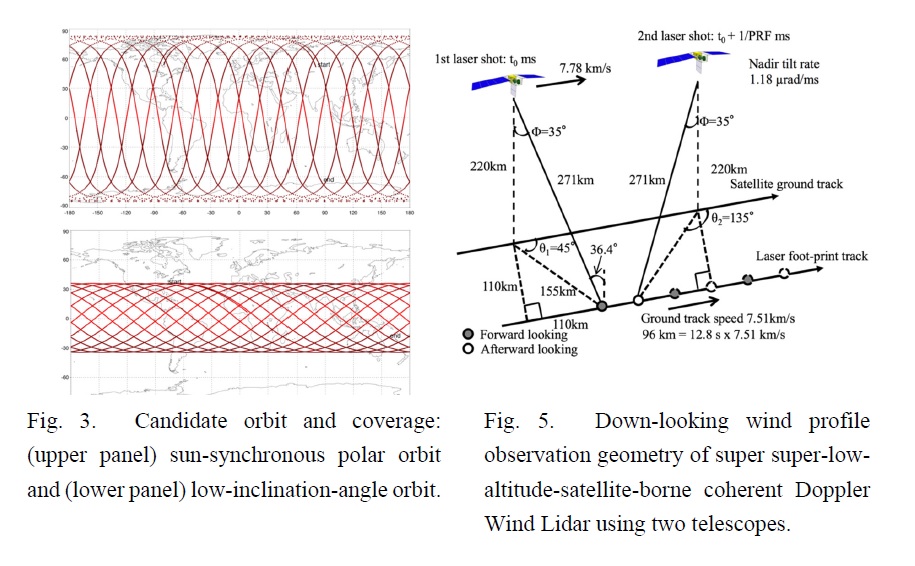Graphical Abstract
Ishii, S., P. Baron, M. Aoki, K. Mizutani, M. Yasui, S. Ochiai, A. Sato, Y. Satoh, T. Kubota, D. Sakaizawa, R. Oki, K. Okamoto, T. Ishibashi, T. Y. Tanaka, T. T. Sekiyama, T. Maki, K. Yamashita, T. Nishizawa, M. Satoh, and T. Iwasaki, 2017: Feasibility study for future space-borne coherent
Doppler wind lidar. Part 1: Instrumental overview for global wind profile observation. J. Meteor. Soc. Japan, 95, 301-317.
https://doi.org/10.2151/jmsj.2017-017
Graphical Abstract with highlights
Highlights:
- Japanese working group is studying the feasibility of a future space-borne 2-μm coherent Doppler wind lidar (CDWL) for global wind profile observation. The paper describes the future space-borne CDWL in terms of technical points and observation user requirements.
- The future mission concept is designed to look at two locations at a nadir angle of 35° at two azimuth angles of 45° and 135° (225° and 305°) along the satellite track for vector wind measurement with vertical resolutions of 0.5 (lower troposphere: 0-3 km), 1(middle troposphere: 3-8 km), and 2 km (upper troposphere: 8-20 km) and horizontal resolution of <100 km along a satellite. The candidate altitude and orbit of the satellite are 220 km and an inclination angle of 96.4° (polar orbit) or 35.1° (low-inclination-angle orbit), respectively.
- The future space-borne CDWL wind profile observation will fill the gap of the current global wind observing systems and contribute to the improvement of the initial conditions for NWP, the prediction of typhoons and heavy rain, and various meteorological studies.







